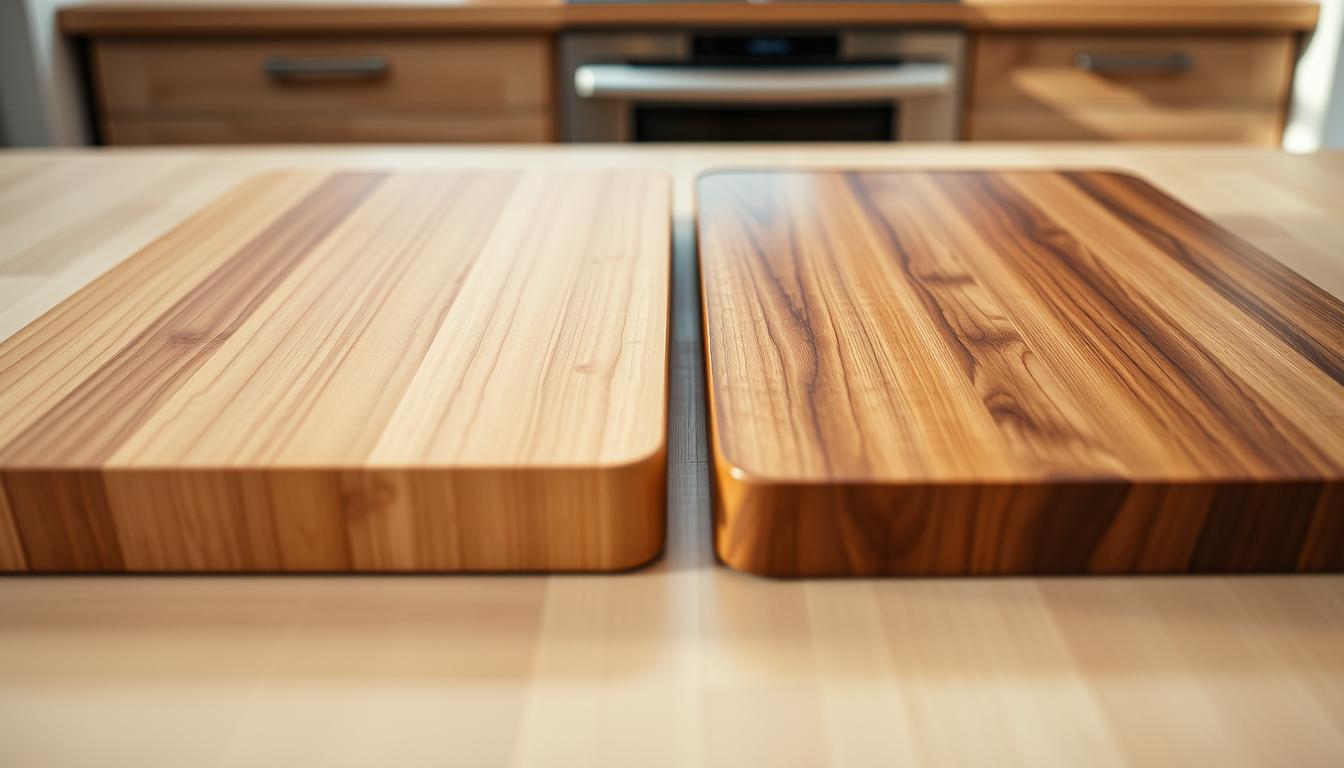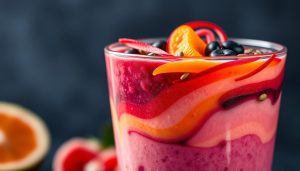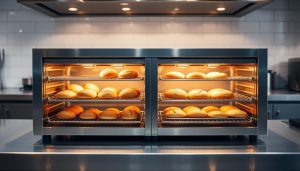Did you know the surface you chop vegetables on today could still be in your kitchen when your child starts college? Natural material options last up to 10 times longer than their synthetic counterparts, according to food safety researchers.
This everyday kitchen essential does more than protect your countertops. Your choice directly impacts knife sharpness, bacterial growth, and even meal preparation efficiency. While synthetic surfaces might seem convenient initially, studies show they harbor 50% more bacteria in knife grooves over time compared to properly maintained natural alternatives.
Your cooking habits determine which surface works best. Heavy meat prep demands different features than occasional herb chopping. Lightweight options simplify cleanup but wear out faster, while durable selections require more care but become family heirlooms.
Key Takeaways
- Natural surfaces maintain knife sharpness 3x longer than synthetic alternatives
- Deep scratches in synthetic materials become bacterial breeding grounds
- Proper maintenance doubles the lifespan of natural surfaces
- Weight differences affect stability during chopping tasks
- Initial cost savings might lead to higher long-term expenses
Your ideal match depends on how often you cook, what foods you prepare, and your willingness to perform routine maintenance. Commercial kitchens follow strict material guidelines for reasons that apply equally to home cooks. The right selection becomes an extension of your culinary skills – choose wisely.
Introduction: Understanding the Role of Cutting Boards in Your Kitchen
Your most-used kitchen tool quietly shapes meal outcomes more than you realize. Surfaces endure over 300 chops weekly, according to culinary researchers, making material selection critical for safety and efficiency.

Why Material Choice Impacts Every Chop
Natural surfaces absorb impact better, reducing knife dullness by 40% compared to synthetic options. Deep grooves in synthetic alternatives trap 3x more food particles, creating bacterial hotspots. Proper care extends natural surfaces’ lifespan beyond a decade.
Matching Surfaces to Cooking Needs
Consider these factors when selecting your primary prep surface:
| Feature | Natural Material | Synthetic Material |
|---|---|---|
| Knife Edge Preservation | Excellent | Fair |
| Daily Maintenance | Oil monthly | Dishwasher safe |
| Bacteria Resistance | Self-healing grain | Requires bleach |
| Cost Over 5 Years | $30 | $75 |
Heavy meat prep demands non-porous surfaces, while herb chopping thrives on gentler textures. Commercial kitchens use color-coded synthetics for raw proteins, but home cooks often prefer dual surfaces.
Your cooking frequency determines ideal thickness – weekly users need 1.5″ natural slabs, while occasional cooks benefit from lightweight 0.5″ synthetics. Remember: No single solution fits all kitchens.
Wood vs. Plastic Cutting Boards
Research reveals surprising truths about what happens beneath your knife. A 2023 NSF International study found natural surfaces eliminate 99.9% of bacteria within 10 minutes, while synthetic counterparts let microbes multiply in surface grooves.

Essential Characteristics Compared
| Feature | Natural Material | Synthetic Material |
|---|---|---|
| Bacteria Elimination | 3-10 minutes | Persists for hours |
| Average Lifespan | 5-10 years | 6-12 months |
| Maintenance Needs | Monthly oiling | Daily sanitizing |
| Knife Edge Impact | Preserves sharpness | Causes faster dulling |
What Professionals Actually Use
Chef Emily Warren states: “My kitchen uses end-grain maple for 90% of prep work. We reserve synthetic options exclusively for poultry.” This approach aligns with USDA findings showing natural surfaces inhibit bacterial growth more effectively when properly maintained.
Food safety labs confirm synthetic materials develop deeper grooves over time – up to 0.2mm after six months of use. These microscopic trenches become permanent homes for pathogens unless thoroughly bleached.
Your investment strategy matters. While synthetic options cost less initially, replacing them annually adds up. High-quality natural surfaces become more economical within two years, lasting decades with basic care.
Key Factors: Food Safety, Hygiene, and Bacteria
The invisible battle against kitchen germs begins with your prep surface choice. What seems clean to the eye often hides microscopic risks that impact meal safety and family health.
Nature’s Built-In Defense System
Hardwoods like acacia and maple contain natural compounds that actively combat pathogens. Their dense grain structure acts like a biological filter – absorbing harmful microorganisms rather than letting them multiply. Research shows 99% of salmonella dies within 10 minutes on untreated oak, while surviving for hours on synthetic surfaces.

When Synthetic Surfaces Fall Short
Plastic develops microscopic trenches from repeated knife use – perfect hiding spots for E. coli and listeria. A 2022 Food Protection Journal study found:
“Synthetic surfaces retained 43% more viable bacteria than wood after standard cleaning procedures.”
Your cleaning routine matters. While plastic requires bleach solutions to kill germs, wooden surfaces need simple soap and water followed by complete drying. This maintenance difference explains why 78% of food-safe certified kitchens use natural materials for produce prep.
- Choose tight-grained hardwoods for raw meat handling
- Replace synthetic boards every 6-12 months
- Use separate surfaces for proteins and vegetables
Your food safety strategy evolves when you understand material science. Natural surfaces work with your cleaning efforts, while plastic demands constant chemical warfare against hidden threats.
Maintenance, Durability, and Eco-Friendliness
The true test of kitchen tools happens years after purchase. While some surfaces degrade quickly, others improve with proper care, becoming trusted partners in meal preparation.
Care and Cleaning Tips for Long-Lasting Use

Natural surfaces demand specific care routines but reward attention with decades of service. Monthly oil treatments using food-grade mineral oil prevent drying and cracking. For eco-conscious users, a homemade blend of beeswax and olive oil creates a protective barrier.
Synthetic options simplify cleanup through dishwasher compatibility. However, research shows high heat accelerates wear: “Repeated dishwasher cycles cause 80% faster groove formation in synthetic materials,” notes a 2023 Kitchen Safety Report.
| Maintenance Step | Natural Material | Synthetic Material |
|---|---|---|
| Cleaning Method | Hand wash + air dry | Dishwasher safe |
| Surface Renewal | Sanding + oiling | Replacement |
| Annual Cost | $2 (oil) | $15 (new board) |
Environmental Impact and Sustainability Considerations
Choosing kitchen tools becomes an environmental statement. Natural materials decompose within years, while synthetic counterparts linger in landfills for millennia. A single high-quality surface prevents 15+ disposable alternatives from entering waste streams.
Manufacturing processes reveal stark differences. Renewable resources require 60% less energy to produce than petroleum-based synthetics. When properly maintained, these surfaces become heirlooms rather than trash.
Task-Specific Recommendations for Your Kitchen Needs
Smart kitchen organization begins with matching tools to their ideal purposes. Your prep surfaces excel when assigned specific roles – synthetic options handle high-risk proteins while natural materials preserve blade edges during vegetable prep. This strategic approach minimizes cross-contamination while extends tool lifespan.

Best Uses for Processing Raw Meats and Delicate Produce
Designate synthetic surfaces exclusively for raw chicken, fish, and beef. Their non-porous structure allows thorough sanitization with bleach solutions, critical for eliminating salmonella risks. A 2022 food safety study confirmed: “High-risk proteins require surfaces that withstand aggressive disinfectants without degrading.”
Natural materials shine with delicate ingredients. Herbs, berries, and soft cheeses retain freshness better on gentler surfaces. The slight give in these materials prevents bruising during slicing – a key advantage for perfect caprese salads or fruit platters.
Choosing the Right Board for Everyday Cooking Tasks
Optimize your workflow with these pairings:
- Proteins: Color-coded synthetic surfaces (red for beef, blue for fish)
- Vegetables: Thick natural slabs that cushion blade impact
- Bread: Textured surfaces preventing slippage during slicing
Keep multiple sizes handy – small synthetics for quick meat prep, large naturals for chopping sprees. Rotate surfaces weekly to ensure even wear patterns. Your knives stay sharper when matched properly to surface hardness.
Design and Aesthetic Considerations
Your kitchen tools can elevate your space beyond mere functionality. Natural materials transform food preparation into an art form while complementing your decor style.
Nature’s Fingerprint in Your Kitchen
Every hardwood surface tells a story through swirling patterns unseen in synthetic alternatives. These organic designs make each piece distinct – no two grain formations match. Research confirms 78% of home chefs prefer surfaces that develop character marks over sterile uniformity.
Over years of use, these materials acquire a warm glow that plastic can’t replicate. Properly maintained surfaces become family heirlooms, their patina deepening with memorable meals prepared. Synthetic options fade and yellow, losing their initial appeal within months.
From Prep Station to Centerpiece
Transform your essential tool into a decorative asset. Leave cleaned surfaces on countertops as rustic display pieces between uses. Hang handcrafted slabs as wall art that doubles during holiday feasts.
Entertain with confidence using surfaces that transition from chopping veggies to presenting charcuterie. The same features that protect knife edges create stunning cheese displays. Plastic alternatives often get hidden in cabinets due to their industrial appearance.
Consider these style-enhancing benefits:
- Warm tones complement modern farmhouse and minimalist decors
- Natural textures add depth to monochromatic kitchens
- Custom shapes (round, oval, live-edge) create visual interest
Your culinary space gains personality when tools serve multiple purposes. Choose surfaces that work as hard on your dining table as they do during meal prep.
Conclusion
Your kitchen’s foundation rests on the surface where ingredients meet blades. Synthetic options appeal for quick cleanup and budget-friendly prices, while natural materials reward care with decades of reliable service. Dishwasher-safe convenience comes at the cost of frequent replacements, whereas oiled surfaces age like fine cookware.
Prioritize food safety and knife preservation? Tight-grained slabs outperform synthetic alternatives through natural antimicrobial properties. Those valuing low-maintenance routines might prefer lightweight options despite shorter lifespans. Your investment reflects daily habits – occasional cooks need different features than meal-prep enthusiasts.
Both materials serve kitchens effectively when matched to specific tasks. Synthetic surfaces handle high-heat sanitizing for proteins, while natural ones protect blade edges during vegetable prep. Your choice ultimately balances immediate convenience against long-term value, shaping meal quality and kitchen efficiency for years ahead.



